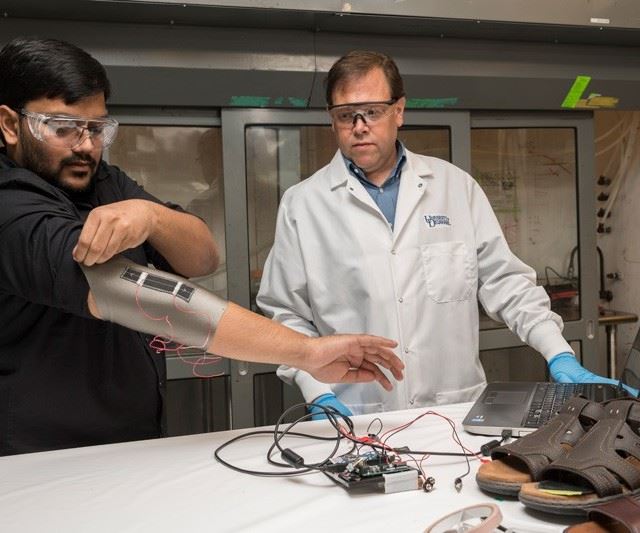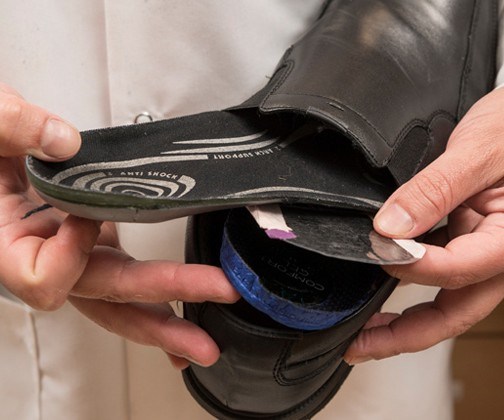Carbon nanotube composite coatings used to create smart textiles
Fabric coated with electrically conductive carbon nanotube composite technology could be used in future smart garments that measure human motion.
The University of Delaware (Newark, DE, US) reported Aug. 16 that team of engineers there is developing next-generation smart textiles by creating flexible carbon nanotube composite coatings on a wide range of fibers, including cotton, nylon and wool. The electrically conductive carbon nanotubes give this fabric coating sensing capability. When the material is squeezed, electrical changes in the fabric are measured. Fabric coated with this sensing technology could be used in future smart garments where the sensors are slipped into the soles of shoes or stitched into clothing for detecting human motion. The nanocomposite coating or film is only 250 – 750 Nm thick and only adds about a gram of weight to a typical shoe or garment.
“The films act much like a dye that adds electrical sensing functionality,” says Erik Thostenson, associate professor in the Departments of Mechanical Engineering and Materials Science and Engineering. “The EPD process developed in my lab creates this very uniform nanocomposite coating that is strongly bonded to the surface of the fiber. The process is industrially scalable for future applications.”
In a recent report in the journal ACS Sensors the team demonstrates the ability to measure a wide range of pressure – from the touch of a finger to being driven over by a vehicle.
Potential applications for the technology include ports medicine applications, post-surgical recovery, and for assessing movement disorders in pediatric populations.
The work was supported by the US National Science Foundation (NSF, Alexandria, VA, US) CAREER Program and the Delaware INBRE program with a grant from NIH-NIGMS (P20-GM103446) and the State of Delaware.
Related Content
-
Universal Matter acquires main operating business of Applied Graphene Materials
UMI aims to combine its graphene capabilities with AGM’s dispersion technologies to accelerate the growth of graphene-based solutions.
-
Ultra-lightweight skis demonstrate potential of graphene-reinforced composites
With a graphene additive, Folsom Custom Skis evolved and optimized the material makeup of its carbon fiber composite touring skis for higher performance at a lighter weight.
-
Nanomaterials optimize performance of space-ready carbon fiber composite panels
A recent ESA project led by Adamant Composites aimed to mature nanomaterial-enhanced CFRP for lighter weight, more thermally and electrically conductive materials for manufacturing satellite structures.













.jpg;maxWidth=300;quality=90)



